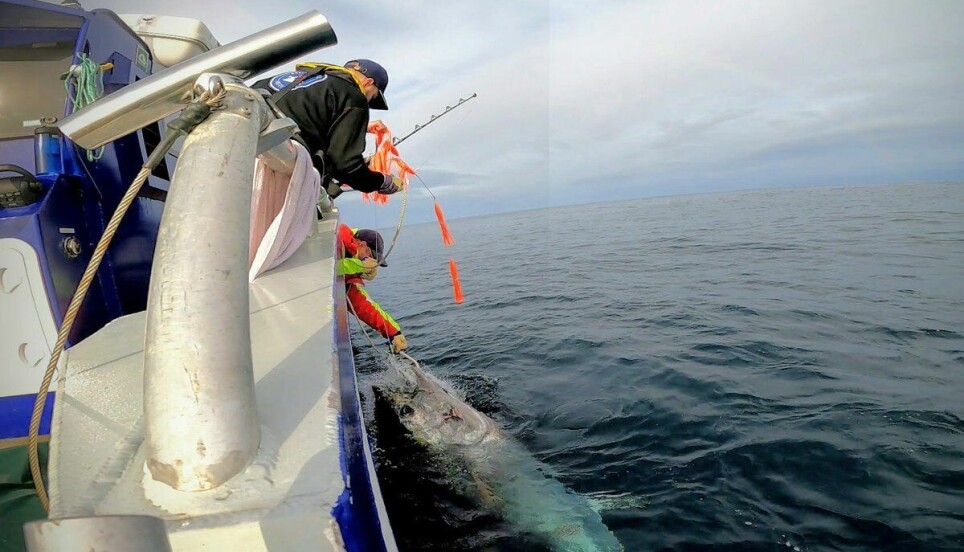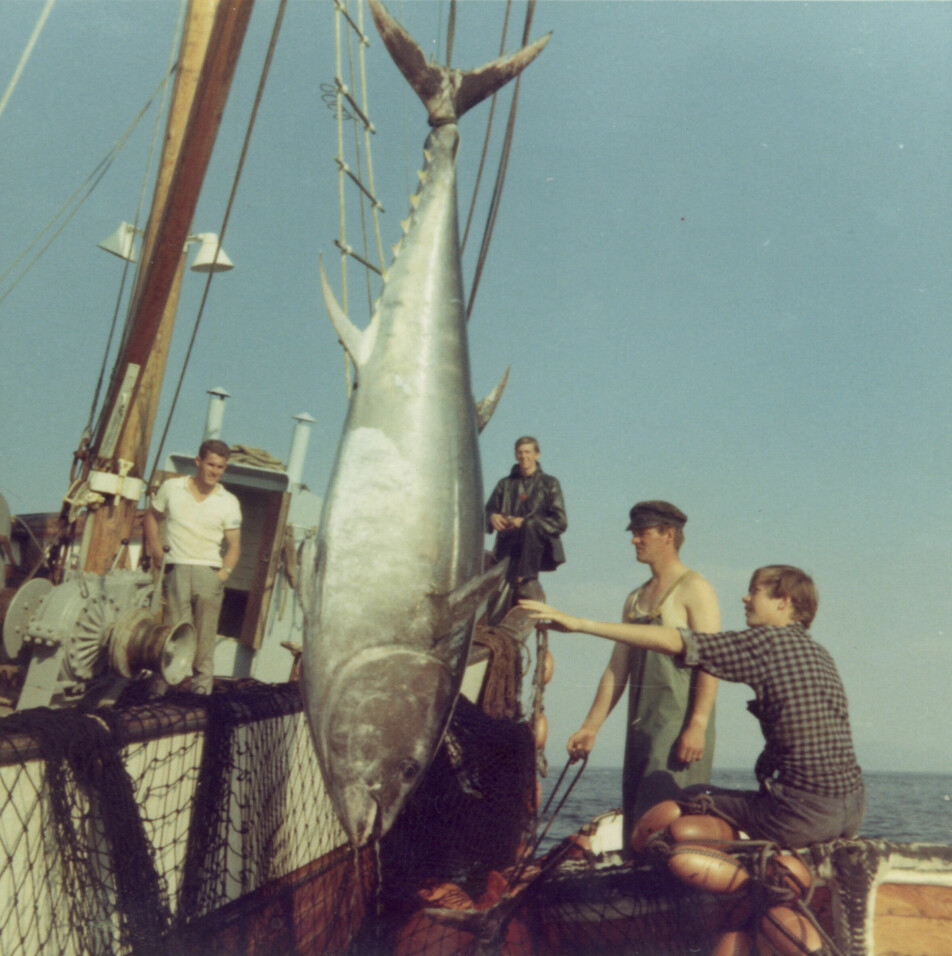
Researchers tracked a bluefin tuna’s 15 000 kilometre swim across the Atlantic and back
A 250 kilo Atlantic bluefin tuna had a satellite tag attached to its back in the autumn of 2020. A year later, the researchers located the same tuna again outside Florø, Norway’s westernmost town. It had swum the equivalent of more than a third of the way around the equator.
Atlantic bluefin tuna is the world's largest tuna species, and is highly sought after for sushi.
In September last year, scientists at the Norwegian Institute of Marine Research (HI) attached a satellite tag to an Atlantic bluefin tuna outside Florø in western Norway, which could log the animal’s travels.
Recently they found the tag again, in the same place as the scientists had tagged the fish a year ago.
“Finding the tag here is just wild! We never thought that the tag would release only 15 kilometres from where we caught the fish a year ago,” Keno Ferter, a researcher at the Institute of Marine Research, said on their website.

A 15 000 kilometre journey
The satellite tag is programmed to release from the fish after one year and stays afloat in the ocean. Only then does the microchip send the data it has collected via satellite to the researchers by email.
The chip logs data on light, pressure, time and temperature, and travel route.
“And what a journey this fish has been on!” says Ferter, who heads the satellite tagging project.
Here you can see the scientists tagging the big fish. (Video: Norwegian Institute of Marine Research)
From Florø, the bluefin tuna swam west past Shetland, almost to Canada, back again and into the Mediterranean Sea. Then north past Ireland and Shetland up into the Norwegian Sea west of Brønnøysund, before turning its snout south toward Florø again.
The bluefin tuna swam over 15 000 kilometres in one year. This is comparable to swimming the entire length of Norway’s coast seven times or more than a third of the earth's equatorial circumference.
Dives up to a thousand metres deep
The bluefin tuna made impressive dives down to a depth of almost 1000 metres and was close to the surface daily.
Ideally, researchers hope to find the released tags as well, because they contain even more data.
And in this case, Ferter found it right near where the scientists had tagged the fish a year ago.
“This suggests that bluefin tuna have an enormous homing ability and can find their way back to good feeding areas year after year,” according to researcher Leif Nøttestad on the HI website.
The researchers are tagging bluefin tuna to learn as much as possible about the distribution and migration of the giant fish.
This giant specimen off Florø is one of the northernmost taggings of bluefin tuna.
Saved from extinction
Atlantic bluefin tuna is the world's largest bony fish. It is the most sought-after fish on the open market, especially in Asia.
After being overfishing in the 1950s, the bluefin tuna was threatened with extinction.
But now the species has rebounded, thanks to strict international catch limits .
The giant fish spawn in the Mediterranean, but migrate back to Norwegian waters to feed on fatty herring, sprat and mackerel.
Norway is the northernmost distribution of bluefin tuna.

Catch limit about 80 bluefin tunas a year
The 2021 Norwegian quota for bluefin tuna is 315 tonnes. This corresponds to about 79 fish the size of the one tagged last year.
The tag data are of great value for studying the species. They can show the researchers unknown spawning areas, feeding areas and how long the tuna stays in which waters.
Last year, the researchers collaborated with ICCAT, the Atlantic tuna commission, to tag five bluefin tunas. Now they are working on this year's tagging.
The researchers combine data from the chips with surface and sonar observations.
Worth as much as a Ferrari
In 2015, a bluefin tuna got trapped in an aquaculture cage at a fish farm at Vågsøy. It weighed 243 kg and was 250 cm long.
“Previously people would say “one tuna, one Toyota” in valuing the prized fish, but now it’s more like “one tuna, one Ferrari,” Nøttestad told Bergens Tidende in 2015.
The price per kilo can reach several thousand Norwegian kroner. A single bluefin tuna can be sold for several million Norwegian kroner, but the value depends on the quality.
The world record of US$ 3 million was set in January this year at a fish market in Tokyo, but such high prices are unusual.































